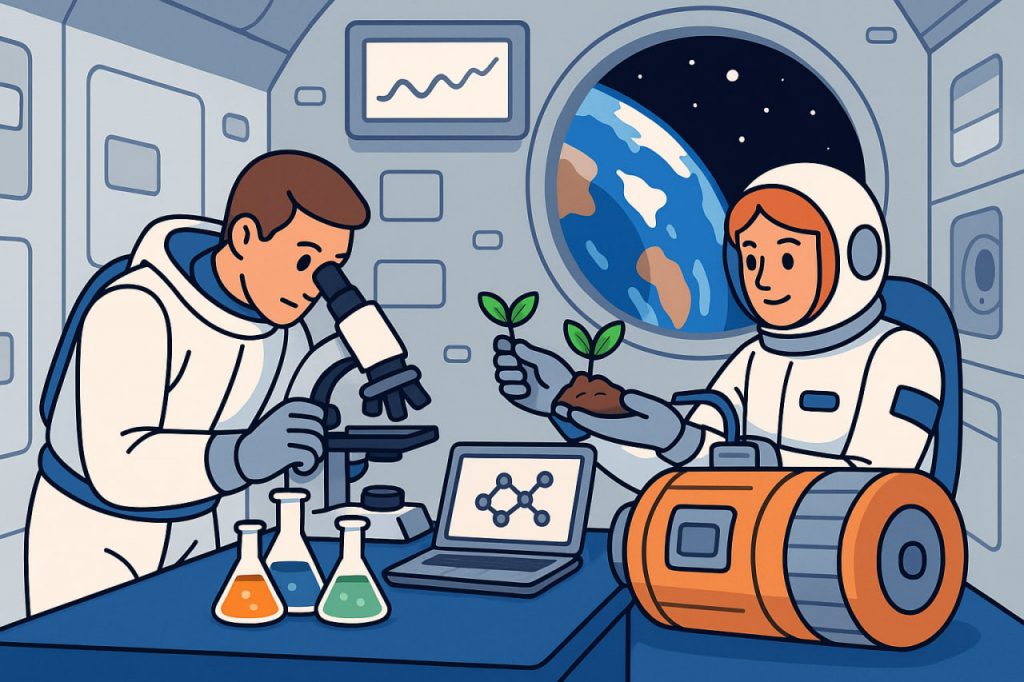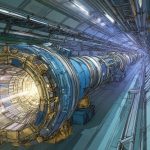The International Space Station (ISS) is not just a symbol of global cooperation, but a fully operational scientific laboratory in orbit. Orbiting Earth at about 400 kilometers in altitude, the ISS travels at a speed of approximately 28,000 km/h, completing one orbit every 90 minutes. Inside this massive structure, astronauts from multiple nations conduct daily scientific experiments in a unique environment that cannot be replicated on Earth. The ISS provides long-term access to microgravity, enabling researchers to study biological, chemical, and physical processes without the interference of gravity. These conditions reveal new insights into cell behavior, fluid dynamics, material science, and more. The station’s modular structure includes dedicated lab modules such as Destiny (USA), Columbus (Europe), and Kibo (Japan), each outfitted with specialized equipment. These modules make the ISS an extraordinary research hub floating above Earth.
Biological and Medical Research
One of the most important uses of the ISS is in biomedical research. In microgravity, human physiology changes rapidly, offering scientists a compressed timeline to observe effects that would take years to develop on Earth. For example, astronauts experience muscle atrophy, bone density loss, and fluid redistribution, all of which provide models for studying aging and osteoporosis. The station also supports experiments on immune system function, cell growth, and wound healing, which may help improve treatments on Earth. Researchers have studied bacteria and viruses in space, discovering that some microbes become more virulent in microgravity, raising important questions for planetary protection and medicine. Plants grown aboard the ISS offer insights into space agriculture, which is crucial for long-duration missions. These medical studies not only safeguard astronaut health but also drive healthcare innovations for life on Earth.
Physics, Chemistry, and Materials Science
The ISS provides an unparalleled setting for physical science experiments. In the absence of gravity, fluids behave differently, allowing the study of surface tension, convection, and combustion in new ways. Astronauts perform experiments with colloids, alloys, and polymers, helping engineers design better materials for electronics, aviation, and construction. For instance, microgravity enables the creation of purer crystals used in semiconductors and pharmaceuticals. The Alpha Magnetic Spectrometer (AMS-02) aboard the station is a high-energy physics instrument that searches for signs of dark matter and cosmic rays. Chemistry labs in orbit help scientists understand how different substances mix or react in space conditions. The data gathered feeds into both theoretical research and practical engineering, potentially revolutionizing material science and industrial manufacturing.
Technology Testing and Earth Observation
The ISS is a critical platform for testing new space technologies before they are deployed on deep-space missions. New systems for life support, robotics, radiation shielding, and 3D printing are tested in real orbital conditions. One notable example is Robonaut, a humanoid robot developed by NASA to assist with tasks that may someday be delegated to autonomous machines. In addition to inward-facing experiments, the ISS supports Earth observation instruments that monitor climate change, deforestation, ocean temperatures, and natural disasters. This satellite-like monitoring helps scientists track global environmental changes with high accuracy. The constant feedback from these instruments also aids in disaster preparedness and resource management on Earth. The ISS thus doubles as a tech incubator and a powerful Earth-science outpost.
International Collaboration and Future Research
The ISS is a model of peaceful international partnership. Operated jointly by NASA, Roscosmos, ESA, JAXA, and CSA, it reflects a commitment to shared scientific goals beyond borders. Crew members from different countries work side-by-side, bringing varied scientific approaches and perspectives. This environment fosters mutual learning, cross-cultural communication, and united scientific progress. Looking ahead, the ISS continues to be a testbed for long-duration missions to Mars and the Moon. Its research prepares humanity for the next era of exploration, where extended stays in space will be required. Plans are already underway to transition the ISS to a more commercial model, allowing private companies and universities broader access to space-based research. In many ways, the ISS is both a culmination of human achievement and a launching pad for the future of science in space.
Glossary
- Microgravity – a condition of near weightlessness experienced in orbit.
- Robonaut – a humanoid robotic assistant used on the ISS.
- Alpha Magnetic Spectrometer (AMS-02) – an instrument used to detect dark matter and cosmic particles.
- Colloids – mixtures of particles dispersed in another substance, often used in materials science.
- Osteoporosis – a disease causing weakened bones, studied using astronaut data.
- Space agriculture – the study of growing food in space environments.


